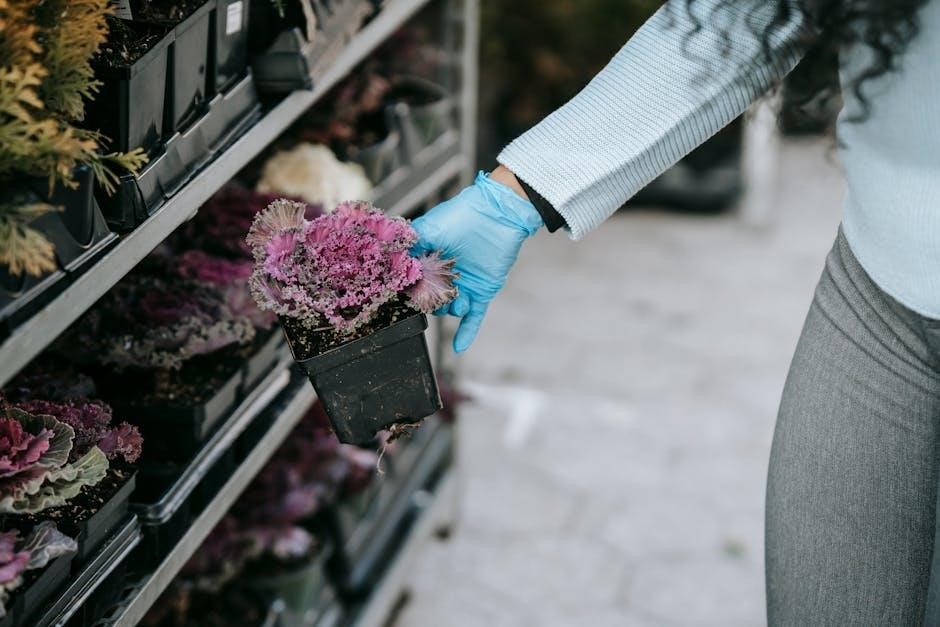
Zone 9 offers a Mediterranean climate, ideal for year-round vegetable gardening. Warm summers and mild winters allow growers to enjoy a diverse range of crops with proper planning.
Understanding USDA Hardiness Zone 9
USDA Hardiness Zone 9 has a Mediterranean climate with hot, dry summers and mild, wet winters. The average annual extreme temperature ranges from 20°F to 30°F, making it suitable for a wide variety of vegetables. Gardeners in Zone 9 benefit from a long growing season, allowing for multiple harvests throughout the year. The zone’s warm conditions support both warm-season and cool-season crops, though timing is crucial to avoid extreme heat. Vegetables like tomatoes, peppers, and eggplants thrive in the summer, while broccoli, kale, and carrots excel in cooler months. Understanding Zone 9’s unique climate and temperature patterns is essential for selecting the right plants and planning a successful gardening schedule.
Year-Round Gardening Opportunities in Zone 9
Zone 9’s Mediterranean climate offers year-round gardening possibilities, with minimal frost and warm temperatures. Spring and fall are ideal for cool-season crops like broccoli, kale, and carrots, while summer supports warm-season crops such as tomatoes, peppers, and eggplants. Winter gardens thrive with spinach, radishes, and Brussels sprouts. The long growing season allows for multiple harvests, enabling gardeners to maximize their yield. Succession planting and crop rotation are key strategies to maintain soil health and productivity throughout the year. With proper planning, Zone 9 gardeners can enjoy a continuous supply of fresh vegetables, making it a paradise for year-round gardening enthusiasts.

Zone 9 Planting Calendar
Zone 9 planting calendars, like those from The Old Farmers Almanac, provide customized dates for sowing seeds and transplanting vegetables, based on local frost dates and zones.
Best Months for Planting Vegetables
Zone 9 gardeners enjoy a long growing season, with planting opportunities year-round. For warm-season crops like tomatoes, peppers, and eggplants, late spring to early summer (May-June) is ideal. Cool-season crops such as broccoli, kale, and carrots thrive in early spring (February-March) or late summer/early fall (August-September). Root vegetables like beets and radishes can be planted in both spring and fall. Asparagus and artichokes, perennials, are best planted in early spring. Herbs like basil and cilantro prefer warmer months, while parsley and dill do well in cooler seasons. Planting in the right months ensures optimal growth and harvest success in Zone 9’s climate.
Seasonal Planting Guide: Spring, Summer, Fall, Winter
Zone 9’s climate allows for year-round gardening, with distinct planting opportunities in each season. Spring is ideal for cool-season crops like broccoli, kale, spinach, carrots, and beets. Summer supports warm-season crops such as tomatoes, peppers, okra, and squash. Fall brings another cool-season window for planting broccoli, kale, carrots, and spinach, while winter is suitable for hardy greens like lettuce, spinach, and kale, as well as root vegetables like radishes and turnips. This seasonal diversity enables gardeners to rotate crops and maintain a productive garden throughout the year, leveraging Zone 9’s mild winters and warm summers to maximize yield and variety.
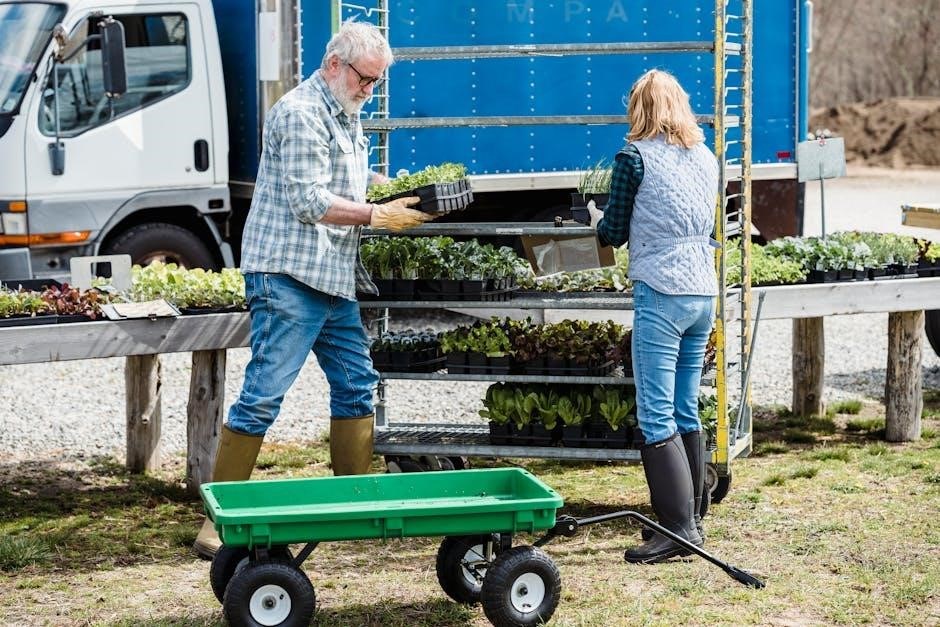
Soil Preparation and Sun Requirements
Zone 9 gardens require well-draining, nutrient-rich soil with organic matter. Most vegetables need full sun (6+ hours daily), while some tolerate partial shade during intense heat.
Optimal Soil Conditions for Vegetable Growth
Zone 9 vegetable gardens thrive in well-draining, nutrient-rich soil with a pH between 6.0 and 7.0. Sandy or loamy soils are ideal, as they prevent waterlogging. Incorporating organic matter like compost or manure enhances soil structure and fertility. For root vegetables, loose soil is essential to prevent deformation. Mulching helps retain moisture and regulate soil temperature. Avoid heavy clay soils, as they can lead to root rot in wet conditions. Test your soil annually to adjust pH and nutrient levels. Vegetables like tomatoes and peppers benefit from slightly acidic soil, while leafy greens prefer a more neutral pH. Proper soil preparation ensures robust growth and maximizes yield in Zone 9’s warm climate.
Sunlight Needs for Different Vegetables
Vegetables in Zone 9 require varying levels of sunlight to thrive. Most warm-season crops, such as tomatoes, peppers, and eggplants, need full sun (6+ hours daily) to produce abundantly. Cool-season crops like broccoli, spinach, and kale prefer partial shade, especially during Zone 9’s intense afternoon heat. Leafy greens may bolt or become bitter in direct sunlight, while root vegetables like carrots and beets tolerate partial shade but need consistent light for even growth. Herbs like basil and cilantro thrive in full sun but may require afternoon shade to prevent scorching. Understanding sunlight requirements ensures optimal placement and health for each vegetable variety in Zone 9’s sunny climate.
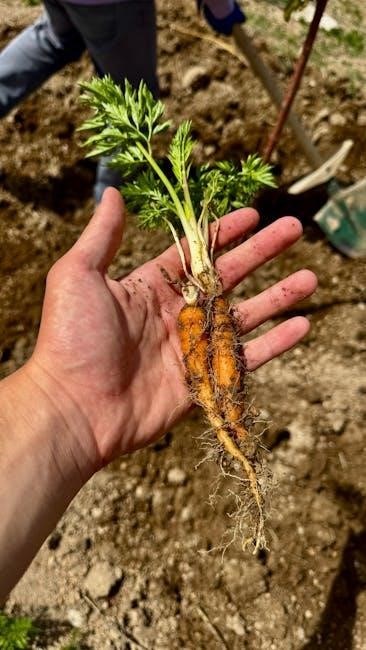
Best Vegetables for Zone 9
Zone 9’s warm climate supports a wide variety of vegetables. Tomatoes, peppers, and eggplants thrive in the heat, while broccoli, kale, and carrots excel in cooler seasons.
Warm-Season Crops: Tomatoes, Peppers, Eggplants
Warm-season crops like tomatoes, peppers, and eggplants are ideal for Zone 9’s long growing season. These plants thrive in temperatures above 65°F and can tolerate Zone 9’s intense summer heat. Tomatoes are a staple, with varieties like ‘Early Girl’ and ‘Cherry Tomatoes’ performing well. Peppers, both sweet and hot, grow abundantly, while eggplants prefer well-drained soil and full sun. Plant these crops in late spring to early summer, after the last frost, for optimal results. Ensure they receive at least 6 hours of direct sunlight daily. Companion planting with herbs like basil or oregano can enhance flavor and deter pests. Regular watering and mulching help retain moisture and suppress weeds.
- Plant tomatoes and peppers in well-draining, fertile soil with a pH of 6.0-7.0.
- Eggplants benefit from slightly acidic soil and consistent moisture.
- Watch for common pests like hornworms and aphids, and manage them organically when possible.
Cool-Season Crops: Broccoli, Kale, Carrots
Cool-season crops like broccoli, kale, and carrots excel in Zone 9’s mild winters and early springs; These vegetables prefer cooler temperatures, making them ideal for planting in late summer to early fall or late winter. Broccoli and kale thrive in Zone 9’s shorter winters, while carrots prefer well-draining, loose soil. Plant broccoli and kale 8-10 weeks before the first frost for a fall harvest or in late winter for a spring crop. Carrots can be direct-sown in early spring or late summer. These crops require consistent moisture and partial shade during the hottest parts of the day. Companion planting with herbs like garlic or nasturtiums can improve growth and deter pests. Regular fertilization and mulching support healthy development in Zone 9’s climate.
- Broccoli and kale prefer slightly acidic to neutral soil (pH 6.0-7.0).
- Carrots need deep, loose soil to grow straight and avoid forking.
- Watch for pests like aphids and cabbage worms, and use organic controls when possible.

Common Challenges in Zone 9 Gardening
Zone 9 gardeners face challenges like intense heat, drought, and pests, which can stress plants and deplete soil health, requiring careful management strategies.

Pests and Diseases: Prevention and Management
Zone 9 gardens often face pests like aphids, whiteflies, and hornworms, which can damage vegetables. Regular inspection and organic controls like neem oil or insecticidal soap are effective. Diseases such as powdery mildew and root rot thrive in hot, dry conditions. Prevention includes crop rotation, proper spacing, and using resistant varieties. Row covers can prevent pests from reaching plants, while companion planting with herbs like basil or marigolds deters insects. Biological controls, such as introducing beneficial insects like ladybugs, help maintain balance. Treat fungal infections with fungicides and improve air circulation to reduce moisture. Remove infected plants to prevent spread. Consistent monitoring and proactive measures are key to managing these challenges effectively in Zone 9’s climate.
Extreme Heat and Drought Management
Zone 9’s intense heat and frequent droughts require careful management to protect vegetables. Mulching retains soil moisture and regulates temperature, while drip irrigation delivers water efficiently. Shade cloth can shield plants during peak sun. Drought-tolerant varieties like okra and southern peas thrive in these conditions. Water deeply but infrequently to encourage deep root growth. Avoid overhead watering, which evaporates quickly and promotes fungal diseases. Soil with organic matter improves water retention. Monitor weather forecasts to plan watering schedules. Apply a layer of compost to enhance soil health and resilience. Conserving water while maintaining plant health is crucial in Zone 9’s arid climate, ensuring vegetables remain productive and vibrant throughout the growing season.
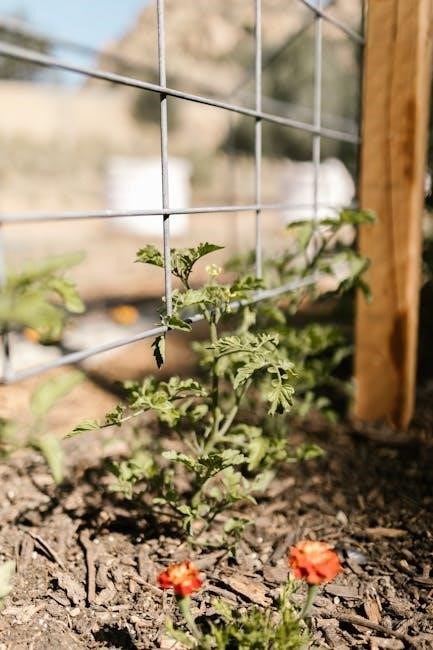
Watering Tips for Zone 9 Vegetables
Zone 9 gardens require efficient watering due to high heat. Use drip irrigation for consistent moisture and mulch to retain water. Avoid overhead watering during peak sun to prevent evaporation and fungal diseases. Water deeply but less frequently to encourage deep root growth. Check soil moisture before watering to avoid overwatering. Incorporate drought-tolerant varieties to reduce water demand. Use compost to improve soil water retention. Early morning or evening watering minimizes evaporation, ensuring plants receive adequate hydration. Monitor weather forecasts to adjust watering schedules. Proper watering techniques are essential for thriving vegetables in Zone 9’s climate.
Watering Techniques for Different Soil Types
Watering techniques vary by soil type in Zone 9. For sandy soils, which drain quickly, use drip irrigation and mulch to retain moisture. Water more frequently but in smaller amounts. Loamy soils, with good water retention, benefit from consistent moisture. Use soaker hoses for even distribution. Clay soils, which hold water longer, require less frequent watering to prevent waterlogging. Avoid overwatering to prevent root rot. For all soil types, check moisture by inserting a finger into the soil up to the knuckle. Incorporate compost to improve soil structure and water retention. Adjust watering schedules based on weather conditions, ensuring plants receive adequate hydration without waterlogging. Proper watering techniques for each soil type are crucial for healthy vegetable growth in Zone 9’s climate.
Conserving Water While Maintaining Plant Health
Conserving water in Zone 9 requires strategic techniques to ensure plant health. Mulching around plants reduces soil evaporation and retains moisture. Drip irrigation is highly efficient, delivering water directly to roots. Rainwater harvesting is another sustainable method, storing water for non-potable uses. Use drought-tolerant vegetables when possible. Condition soil with compost to improve water retention. Water deeply but infrequently to encourage deep root growth. Avoid overhead sprinklers, which lose water to evaporation. Instead, water at ground level during early morning or evening to minimize loss. Monitor soil moisture by inserting a finger or trowel. These practices help conserve water while maintaining healthy, thriving plants in Zone 9’s dry climate.
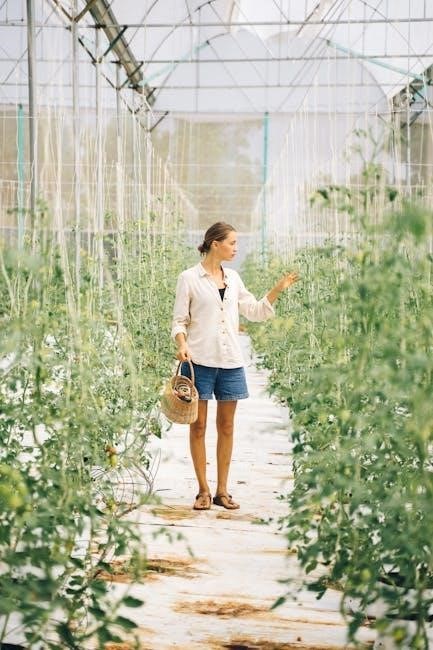
Starting Seeds Indoors
Starting seeds indoors in Zone 9 allows for earlier harvests and better control over growing conditions. Begin seeds like tomatoes and peppers 6-8 weeks before the last frost date. Use seed starting mix and maintain optimal soil temperature for germination. Provide adequate light, such as grow lights, once seeds emerge. Harden off seedlings before transplanting outdoors to ensure a smooth transition. Proper timing and care ensure healthy, robust plants ready for the garden.
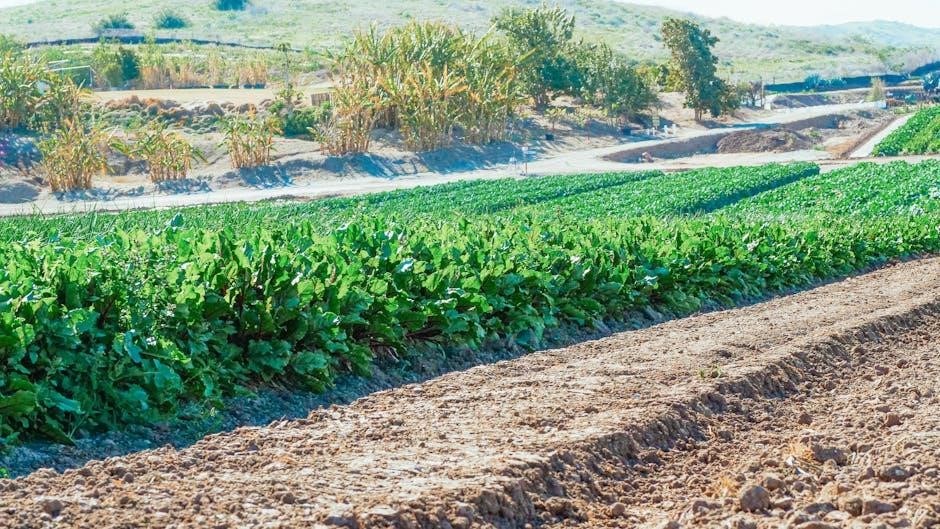
When to Start Seeds Indoors for Zone 9
Starting seeds indoors in Zone 9 depends on the vegetable type and desired planting season. For warm-season crops like tomatoes and peppers, begin seeds indoors 6-8 weeks before the last frost date, typically in late winter. Cool-season crops, such as broccoli and kale, can be started indoors in late summer for a fall harvest. Ensure seedlings have adequate time to mature before transplanting. Check seed starting calendars specific to Zone 9 for precise timing. Adjust based on weather patterns and soil temperature to optimize germination and growth. Proper timing ensures healthy seedlings ready for outdoor planting when conditions are favorable.
Transplanting Seedlings Outdoors
Transplanting seedlings outdoors in Zone 9 is best done during cooler parts of the year to minimize stress. For warm-season crops like tomatoes, transplant in early spring after the last frost. Cool-season crops, such as broccoli and kale, thrive when transplanted in late summer or early fall. Harden off seedlings by gradually exposing them to outdoor conditions over 7-10 days. Choose a cloudy or late afternoon time to transplant to reduce heat shock. Water thoroughly before and after transplanting to settle the soil. Space seedlings according to their mature size and avoid over-handling roots. Monitor for pests and stress post-transplant and provide shade if necessary during extreme heat. Proper transplanting ensures a smooth transition for seedlings to thrive outdoors.
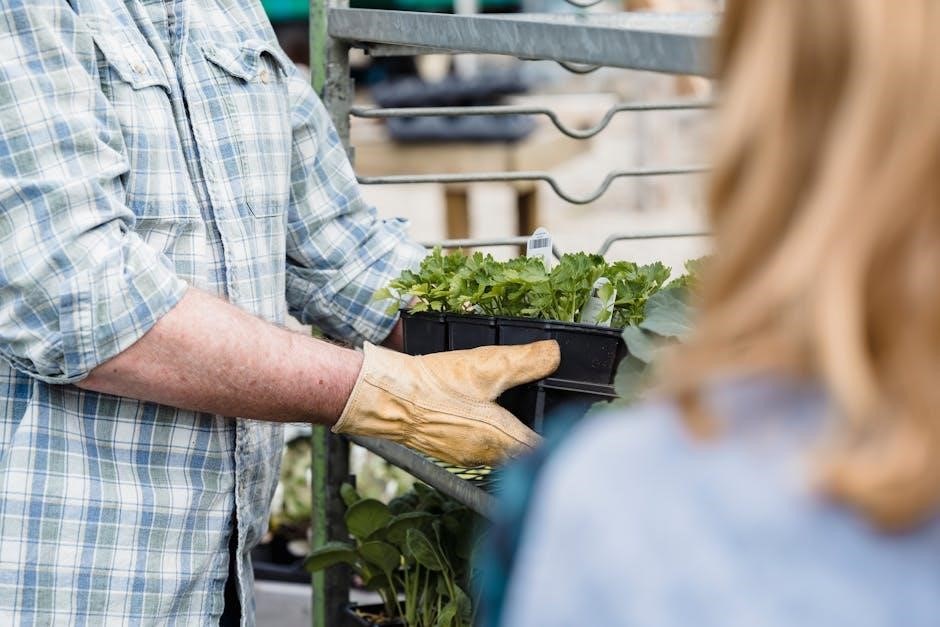
Companion Planting in Zone 9
Companion planting in Zone 9 enhances growth, deters pests, and improves flavors by pairing vegetables with beneficial plants like marigolds, basil, and nasturtiums, promoting a balanced garden ecosystem.
Beneficial Pairings for Vegetable Gardens
Companion planting in Zone 9 can significantly enhance vegetable garden productivity. Certain plants naturally improve growth, deter pests, and boost flavors when grown together. For example, pairing tomatoes with basil repels pests like whiteflies and improves flavor. Marigolds planted alongside tomatoes and peppers deter nematodes and attract beneficial insects. Cucumbers benefit from dill, which repels aphids and mites, while radishes planted near cucumbers can ward off cucumber beetles. Herbs like garlic and chives are excellent companions for carrots and roses, as they repel aphids. Additionally, nasturtiums and calendulas attract predatory insects that control pest populations. Planting beans and corn with squash (the “Three Sisters”) creates a balanced ecosystem, improving soil health and structure. These pairings promote a holistic approach to gardening, ensuring a thriving and diverse vegetable garden in Zone 9.
Plants to Avoid Growing Together
When planning a vegetable garden in Zone 9, it’s crucial to avoid planting certain vegetables together, as some combinations can hinder growth or increase pest susceptibility. For instance, tomatoes and fennel should not be planted together, as fennel can inhibit tomato growth and attract harmful pests. Onions and beans are also a poor combination, as onions can stunt bean growth. Potatoes and tomatoes, both members of the nightshade family, should be kept apart to avoid shared diseases. Additionally, planting members of the Brassica family, like broccoli and kale, near strawberries can lead to competition for nutrients and space. Avoiding these problematic pairings ensures healthier, more productive plants and minimizes potential issues in your Zone 9 vegetable garden.
Gardening in Zone 9 offers year-round opportunities for growing delicious vegetables. With proper planning, soil care, and water management, you can enjoy a thriving and productive garden all seasons.
Final Tips for a Successful Zone 9 Vegetable Garden
To achieve a thriving Zone 9 vegetable garden, prioritize soil health by adding compost regularly. Choose varieties suited to your climate and rotate crops to prevent pests and diseases. Water deeply but infrequently to encourage deep root growth, and mulch to retain moisture and suppress weeds. Companion planting can enhance growth and deter pests—pair tomatoes with basil or marigolds for mutual benefits. Keep a gardening journal to track planting dates, weather patterns, and pest activity. Monitor temperature extremes and use shade cloth during intense heatwaves. Lastly, stay consistent with maintenance and adapt strategies based on seasonal observations. With these practices, you’ll enjoy a bountiful and resilient garden year-round in Zone 9.
 lucky brand jeans fit guide
lucky brand jeans fit guide  sea of stars trophy guide
sea of stars trophy guide  cartagena guide book
cartagena guide book  wanted dead trophy guide
wanted dead trophy guide  lexile level guided reading level
lexile level guided reading level  tv guide tonight baltimore
tv guide tonight baltimore  c.s. lewis mere christianity pdf
c.s. lewis mere christianity pdf  ford ranger manual gearbox
ford ranger manual gearbox  manual d calculation
manual d calculation  safety first grow and go manual
safety first grow and go manual